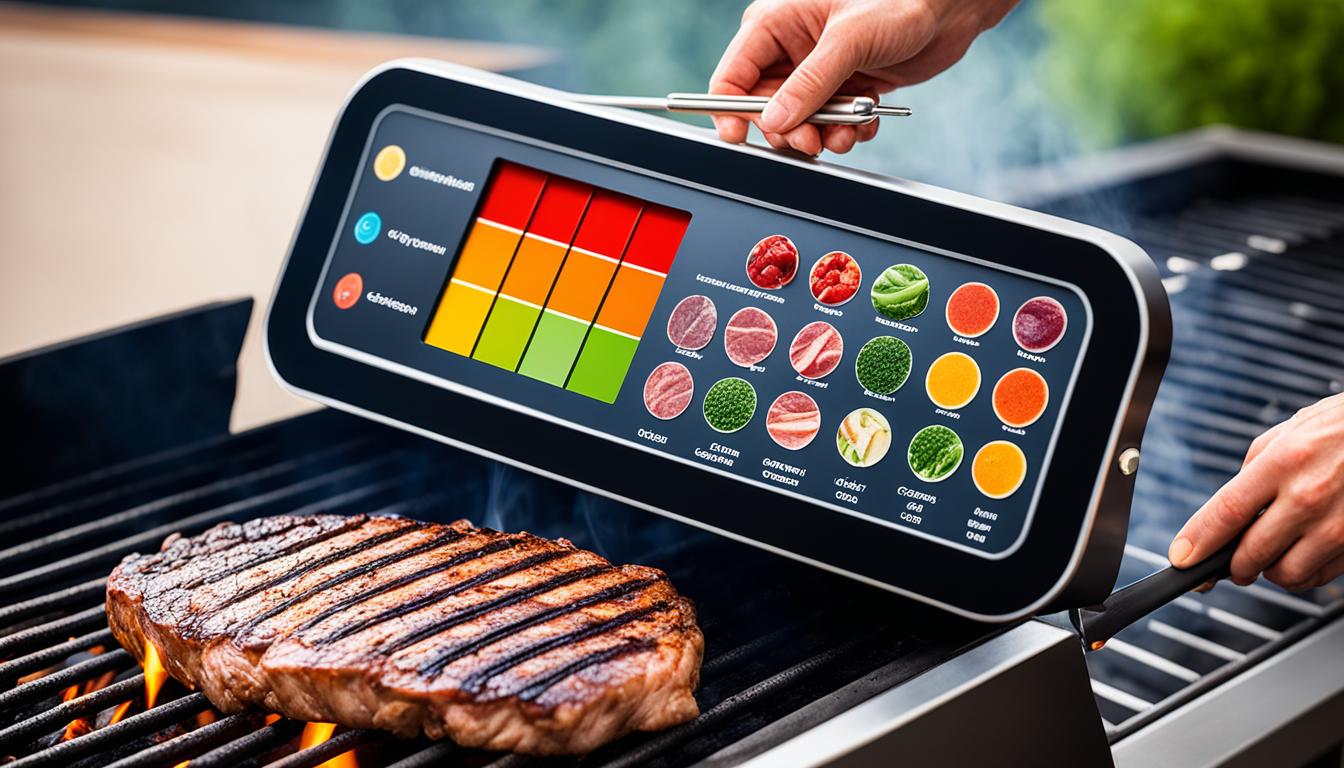Have you ever wondered how hot your grill fire needs to be to get that perfect sear on a steak or achieve tender, juicy chicken? What if there was a simple way to gauge the heat of your fire without using any fancy gadgets?
When it comes to grilling, understanding how to control the heat and temperature of your fire is essential for achieving delicious results. Different foods require different levels of heat, so it’s crucial to know exactly how hot your fire is before you start cooking.
One simple method is to hover your hand about four to five inches above the cooking grate and count the seconds it takes until the heat becomes uncomfortable. This quick and easy hand test can give you a rough estimate of the temperature of your fire.
But wait, does this mean you risk burning your hand? Not at all! We’ve got you covered with a handy guide that will help you determine the approximate temperature of your grill fire without putting yourself in harm’s way.
Now, you can confidently kickstart your grilling journey armed with the knowledge of how to control the heat and temperature of your fire. Whether you’re a beginner or an experienced pitmaster, join us as we explore various grilling techniques, methods, and experts’ advice on achieving the perfect temperature for grilling.
Tips for Grilling Temperature Control
Achieving the perfect temperature for grilling requires some expert advice and best practices. Whether you’re a beginner or a seasoned griller, these tips will help you master the art of temperature control for delicious and perfectly cooked meals.
Grilling Tips for Beginners
- Start with a clean grill: Ensure your grill grates are clean and free from any leftover food or debris. This helps to prevent flare-ups and ensures even heat distribution.
- Preheat your grill: Preheating your grill before cooking is crucial for achieving consistent heat. Allow enough time for your grill to reach the desired temperature before placing your food on the grates.
- Use a two-zone fire: Create two heat zones on your grill by having a hot direct heat area and a cooler indirect heat area. This allows you to sear and cook your food at different temperatures based on the requirements of each ingredient.
- Monitor the grill temperature: Use a grill thermometer to keep track of the temperature inside your grill. This ensures that you maintain the desired heat level throughout the cooking process.
Grilling Safety Tips
- Position your grill properly: Place your grill on a stable surface away from any flammable materials, such as trees or hanging branches. This reduces the risk of accidents and fire hazards.
- Keep a fire extinguisher nearby: In case of any emergencies, always have a fire extinguisher within reach. It’s better to be prepared and ensure the safety of yourself and others around you.
- Avoid cross-contamination: Use separate cutting boards and utensils for raw and cooked foods to prevent the spread of bacteria. Always wash your hands thoroughly after handling raw meat.
- Stay attentive while grilling: Never leave your grill unattended, especially when dealing with high heat. Stay focused and keep a close eye on your food to avoid overcooking or burning.
Achieving the Perfect Grill Marks
Grill marks not only enhance the visual appeal of your grilled dishes but also add a delicious caramelized flavor. Follow these tips to achieve those desirable grill marks:
- Preheat your grill: Ensure your grill is hot before placing your food on the grates. This helps to create the initial sear that forms the grill marks.
- Leave the food undisturbed: Once you place your food on the grill, avoid moving or flipping it too frequently. Let it cook for a few minutes on each side to develop those beautiful grill marks.
- Use a clean and well-maintained grill: A dirty grill can hinder the formation of distinct grill marks. Keep your grill grates clean and oiled to prevent sticking and ensure proper searing.
- Rotate the food: To achieve crosshatch grill marks, rotate your food 45 degrees halfway through cooking on each side. This creates an attractive pattern that adds visual appeal to your dish.
Expert grilling advice and best practices can help you master the art of temperature control. By following these tips, you’ll be well on your way to grilling delicious meals with perfect grill marks and utmost safety.
How to Measure Grilling Temperature
Measuring the temperature of your grill is essential for accurate cooking. Fortunately, there are a few reliable methods you can use to ensure that your grill is at the right temperature.
One popular option is using grill thermometers. These handy devices come in various types, such as instant-read thermometers and probe thermometers. Simply insert the probe into the thickest part of the meat and wait for the temperature reading to appear on the display. It gives you precise and instant feedback on the internal temperature of your food.
Another method you can try is the grill hand test. Carefully hover your hand about four to five inches above the cooking grate. Be cautious not to touch the surface directly. Depending on the duration you can comfortably hold your hand in position, you can estimate the temperature. Remember, if you can only keep your hand above the grate for a few seconds, it’s a high heat, while a longer duration indicates a lower heat.
By utilizing these techniques, you can accurately measure your grilling temperature, ensuring that your food is cooked to perfection every time.
